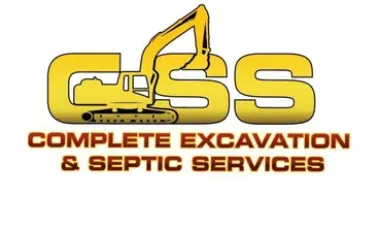
Proudly Serving: Grand Isle, Franklin & Chittenden Counties, VT and Clinton County, NY

Enhancing Your Property: The Essential Guide to Drainage System Installation in Grand Isle County, Vermont
Living in Grand Isle County, Vermont, offers a picturesque landscape and serene surroundings, but it also presents unique challenges, especially when it comes to managing water on your property. Installing a proper drainage system is crucial to protect your home from water damage and preserve the integrity of your land. In this comprehensive guide, we'll delve into everything you need to know about drainage system installation in Grand Isle County, Vermont, addressing common questions and providing expert advice.
Understanding Drainage Systems:
Before diving into the specifics of installation, let's understand the importance of drainage systems. A drainage system is designed to redirect excess water away from your property, preventing waterlogging, erosion, and potential damage to structures. By efficiently managing water runoff, you can safeguard your home's foundation, landscaping, and overall property value.
Common Questions and Answers:
1. Why is proper drainage important for my property in Grand Isle County?
Proper drainage is essential in Grand Isle County due to its varied terrain and seasonal weather patterns. Without adequate drainage, water can accumulate, leading to soil erosion, basement flooding, and even structural damage to buildings.
2. How do I know if my property needs a drainage system?
Signs of poor drainage include standing water, soggy or waterlogged soil, erosion, and basement moisture. If you notice any of these indicators, it's time to consider installing a drainage system to mitigate potential damage.
3. What types of drainage systems are suitable for Grand Isle County?
In Grand Isle County, common drainage systems include French drains, swales, and dry wells. Each system is tailored to address specific drainage issues, whether it's surface runoff, groundwater infiltration, or both.
4. Can I install a drainage system myself, or should I hire a professional?
While some homeowners may attempt DIY drainage projects, it's often best to enlist the expertise of professionals, especially for complex installations. A professional contractor can assess your property, design an effective drainage solution, and ensure proper installation for long-term effectiveness.
5. How much does drainage system installation cost in Grand Isle County?
The cost of drainage system installation varies depending on factors such as the size of your property, the type of drainage system needed, and any site-specific challenges. It's advisable to obtain quotes from reputable contractors to determine the most cost-effective solution for your property.
6. Will installing a drainage system increase my property's value?
Yes, a properly installed drainage system can enhance your property's value by protecting it from water damage and preserving its structural integrity. Potential buyers are more likely to be attracted to a property with effective drainage, reducing the risk of future issues.
7. Are there any regulations or permits required for drainage system installation in Grand Isle County?
Regulations regarding drainage system installation may vary depending on your location within Grand Isle County. It's advisable to check with local authorities or consult with a professional contractor to ensure compliance with any relevant permits or zoning requirements.
8. How long does it take to install a drainage system?
The duration of drainage system installation depends on factors such as the complexity of the project, weather conditions, and the availability of materials. While some installations may be completed in a few days, larger or more intricate projects may take several weeks to complete.
Expert Tips for Drainage System Installation:
1. Conduct a thorough assessment of your property to identify problem areas and determine the most effective drainage solutions.
2. Choose the right type of drainage system based on your property's needs and soil conditions.
3. Ensure proper grading and sloping to facilitate water flow away from structures and toward drainage outlets.
4. Use high-quality materials and professional installation techniques to maximize the longevity and effectiveness of your drainage system.
5. Regular maintenance is key to keeping your drainage system functioning optimally. Clear debris, inspect for any signs of damage, and address issues promptly to prevent costly repairs down the line.
Conclusion:
Investing in a drainage system for your property in Grand Isle County, Vermont, is a proactive step toward safeguarding your home and preserving its value. By understanding the importance of proper drainage, addressing common questions, and following expert advice, you can ensure a successful drainage system installation that effectively manages water runoff and protects your property for years to come.

Hours:
Mon - Fri 9:00 am - 5:00 pm
Extended hours by appointment only.



All rights reserved | Privacy policy | Client Support Area
Disclaimer: Septic inspection credit is applied to septic installations only and must be redeemed within 7 days after a written quote provided upon state acceptance of design.
Disclaimer: Septic soil test credit is applied to septic installations only and must be redeemed within 7 days after a written quote provided upon state acceptance of design.